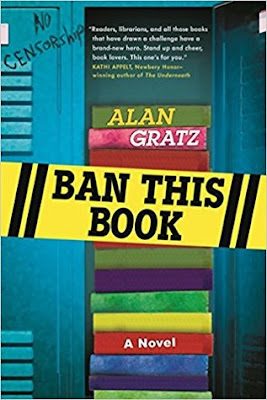In this graphic memoir, author Shannon Hale revisits her elementary school years and her experiences with friendship, cliques, siblings, and bullies.
Sandwiched in the middle between two older and two younger siblings, Shannon just wants to stay home with her mother. But, once Kindergarten begins, Shannon meets Adrienne and her life changes with a best friend. The two girls have lots of fun playing and having all kinds of imaginary adventures together, but Shannon’s possessiveness begins to bother Adrienne by second grade. And then Adrienne moves away and Shannon reluctantly makes another friend.
In third grade, Adrienne suddenly moves back, and she and Shannon continued to be friends, but now, other girls wanted to be friends with Adrienne. A group, referred to as The Group, forms around a girl named Jen, and Adrienne is immediately accepted into their clique, while Shannon is treated like an outside or only reluctantly and occasionally allowed to be part of The Group. Luckily, Jen already had a best friend, Jenny, so she isn’t interested in Adrienne. But Jenny quickly realizes that Shannon as just the kind of girl she can bully. Jealous that Jen and Shannon spend some time together during summer vacation, Jenny ramps up the bullying.
To add to Shannon’s distress, her older sister Wendy, who’s having her own friend problems, takes her anger and frustration out on her younger sister, verbally and physically. Shannon’s unpredictable up and down year becomes so stressful, she begins showing OCD symptoms and having frequent stomach aches.
Shannon’s life doesn’t change much in fourth grade, but when fifth grade starts, everything changes. And what Shannon learns about friendships and real friends is both eye-opening and thought provoking.
Shannon Hale is to be admired for addressing her elementary school years with such painful openness and honesty. Despite everything she experiences, she does not present herself as a victim, rather we see that she was a bit of a crybaby whenever her feelings were hurt, and, as her sister Wendy says, obnoxious at times. And a little on the selfish side as far as her friendship with Adrienne is concerned.
But readers also see that sometimes, elementary school age kids can be really mean - as in Jenny’s behavior, yet Hale makes it clear that Jenny also is dealing with her own tough issues. On the other hand, there is the boy who spits in Shannon’s face for no reason.
Shannon was a daydreamer, and so was I and my Kiddo. I appreciated the way she brought out how she missed things that no one else missed - for example, how did she not know everyone had put in for the same fifth grade class except her. That is exactly the kind of thing I remember happening to me and to my Kiddo. It’s the kind of thing that makes a kid feel even more like an outsider. But, Shannon’s daydreams, as they are presented in the graphics, also really show what a wonderfully vivid imagination she had and the very beginnings of her writing career.
The thing I especially liked about this book is that Hale makes it clear that she wasn’t only kid in her school who was on this roller coaster ride of family and social relationships. And her reason for writing such an open, honest look at those painful years: so that readers, young and old, who have had similar feelings and experiences, will know they weren’t the only one.
A word about the graphics: LeUyen Pham has really captured the essence of the early 1980s, when this story takes place. The colors, hairstyles, clothes are all so realistic (and I know, I remember). The colors are bold, and her images reflect the variety of emotions in recognizable facial expressions and body language throughout the book.
Despite its 1980s setting, Real Friends is a book that resonates in today's world and for that reason, I would recommend to young readers, as well as their parents and teachers.
This book is recommended for readers age 8+
This book was borrowed from the NYPL
Despite its 1980s setting, Real Friends is a book that resonates in today's world and for that reason, I would recommend to young readers, as well as their parents and teachers.
This book is recommended for readers age 8+
This book was borrowed from the NYPL

















































